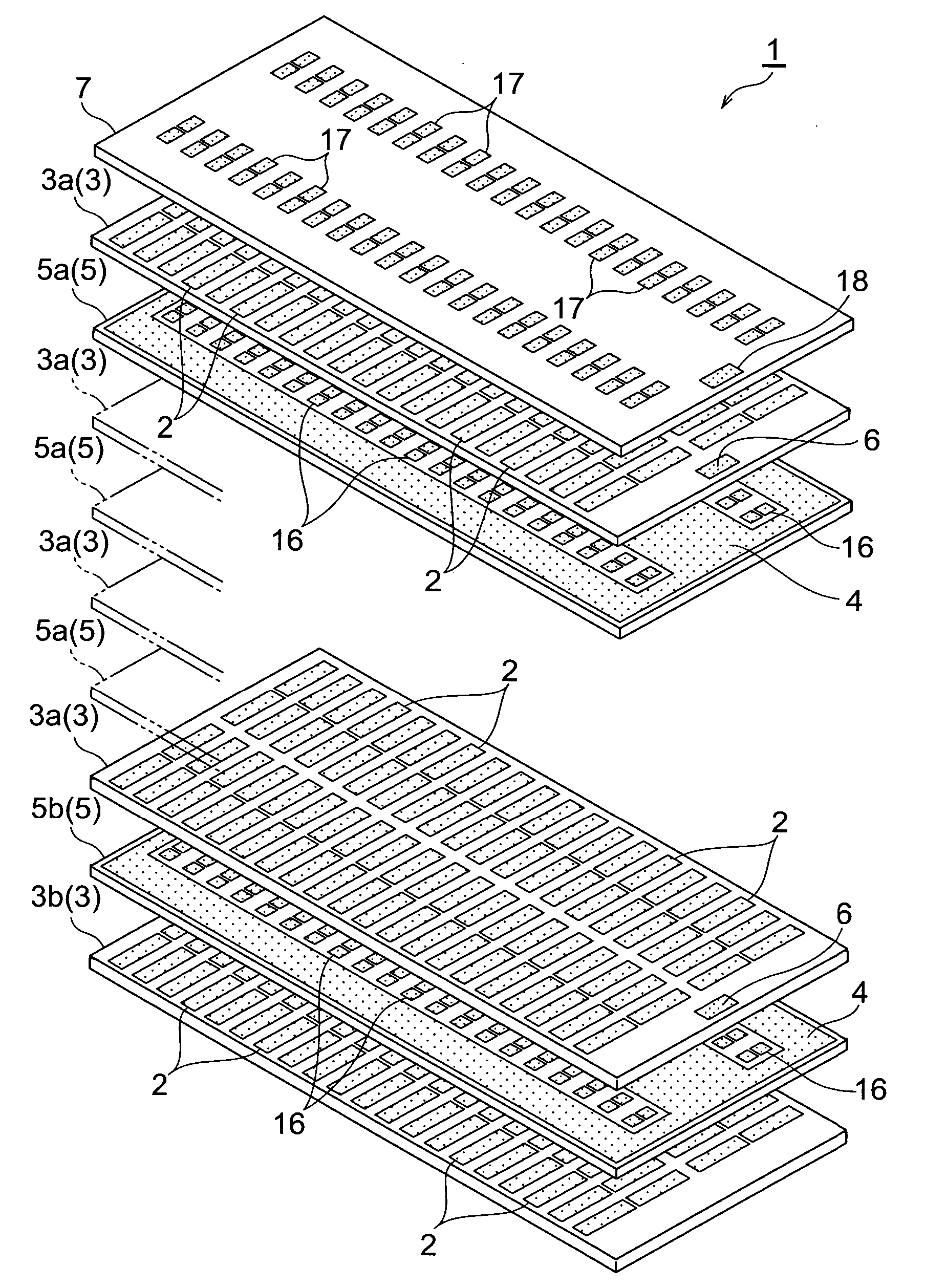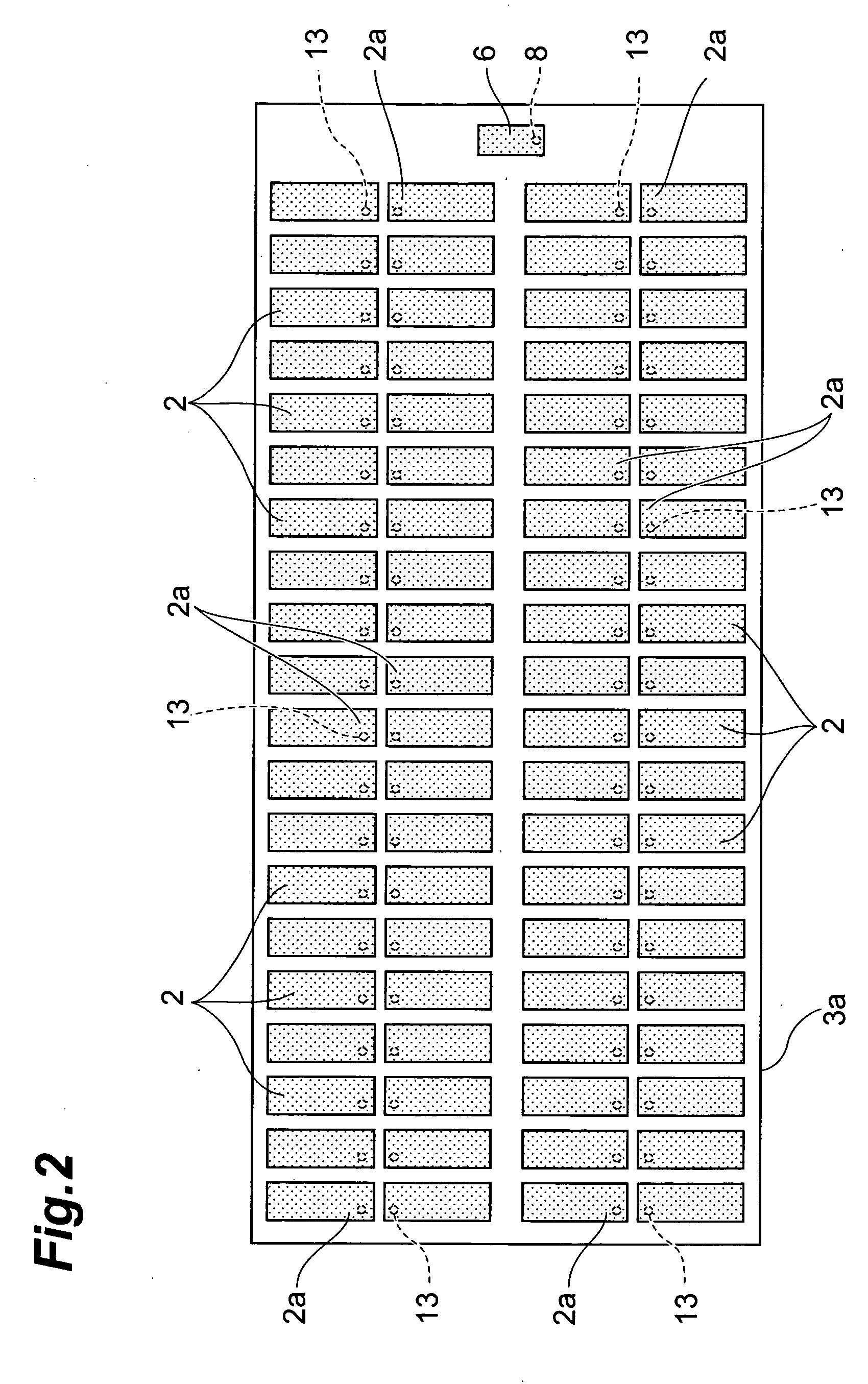Multilayer ceramic device, method for manufacturing the same, and ceramic device
a ceramic device and multi-layer technology, applied in the field of multi-layer ceramic devices, can solve problems such as breaking the electric connection through, and achieve the effects of suppressing the disconnection trouble or breakage of the electric connection, reducing the thickness of the internal electrode, and suppressing the disconnection troubl
- Summary
- Abstract
- Description
- Claims
- Application Information
AI Technical Summary
Benefits of technology
Problems solved by technology
Method used
Image
Examples
first embodiment
[0032] As shown in FIG. 1, the multilayer piezoelectric device (multilayer ceramic device) 1 of the first embodiment is constructed in a configuration wherein piezoelectric layers (ceramic layers) 3 with individual electrodes (internal electrodes) 2, and piezoelectric layers (ceramic layers) 5 with a common electrode (internal electrode) 4 are alternately stacked and wherein a piezoelectric layer (ceramic layer) 7 with terminal electrodes17, 18 is further stacked as the uppermost layer.
[0033] Each of the piezoelectric layers 3, 5, and 7 is made of a material consisting primarily of a ceramic such as lead zirconate titanate and is formed, for example, in a rectangular thin plate shape of “10 mm×30 mm, and 30 μm thick.” The individual electrodes 2 and common electrodes 4 are made of an electroconductive material consisting primarily of Ag and Pd, and are formed in a pattern by screen printing. This also applies to each of electrodes described below, except for terminal electrodes 17,...
second embodiment
[0061] The multilayer piezoelectric device (ceramic device) 1 according to the second embodiment is different in the material of the internal electrodes 2 and others and the material of the electroconductive members 14 from the multilayer piezoelectric device 1 of the first embodiment.
[0062] Namely, in the multilayer piezoelectric device 1 of the second embodiment, the individual electrodes 2 and common electrodes 4 are made of a material in which a common material is mixed in a metal material (electroconductive material), and thus have electric conductivity. This metal material consists primarily of Ag and Pd, and the common material is the same ceramic material as the material forming the piezoelectric layers 3, 5, 7. The content of the common material in the individual electrodes 2 and the common electrodes 4, as a mass percentage relative to the metal material, is, for example, 20% by mass relative to the metal material.
[0063] The electroconductive members 14 in the through ho...
PUM
| Property | Measurement | Unit |
|---|---|---|
| thick | aaaaa | aaaaa |
| temperature | aaaaa | aaaaa |
| electroconductive | aaaaa | aaaaa |
Abstract
Description
Claims
Application Information
 Login to View More
Login to View More - R&D
- Intellectual Property
- Life Sciences
- Materials
- Tech Scout
- Unparalleled Data Quality
- Higher Quality Content
- 60% Fewer Hallucinations
Browse by: Latest US Patents, China's latest patents, Technical Efficacy Thesaurus, Application Domain, Technology Topic, Popular Technical Reports.
© 2025 PatSnap. All rights reserved.Legal|Privacy policy|Modern Slavery Act Transparency Statement|Sitemap|About US| Contact US: help@patsnap.com



